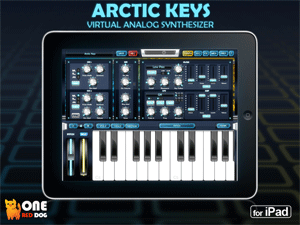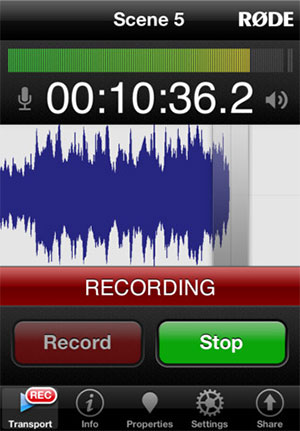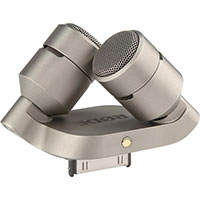The KORG Legacy Collection compresses the cost and space of five KORG synthesizers into one piece of software. Keeping up with the technological times (and popular demand), KORG has updated the Legacy Collection to include support for 64-bit system architecture and operating systems for both Windows and Mac. If you already own the collection, the update is free. Otherwise, this is just one more reason in a long list to take a close look to see where this software might fit into your musical toolbox.
Get all the details here: http://musicindustrynewswire.com/korg-offers-64-bit-support-for-legacy-collection-software-on-both-mac-and-windows-platforms/
Mono or Stereo – Your output may vary
We all know stereo sounds ‘better’, so why bother recording in anything else? As a general rule, unless you are recording through more than one microphone you are recording a mono track. This track can later be panned left or right to provide stereo output. A mono track panned to the center is identical to a stereo track with identical left and right channel output. If you want the thick sound of stereo, you can layer mono tracks. It’s possible to copy and layer a single take, but the results won’t be quite as good. The extra time to record multiple takes to layer will show in your final product.
Take a look at the full article here: http://thedawstudio.com/Tips/Mono_and_Stereo.html
Metronome, click track, or neither?
Metronomes are tools to keep tempo, giving and audible click or beep at the set rate. They are available in wind-up mechanical varieties that click, or newer electronic models that beep. Each is frequently used by students and teachers alike to keep in time with music.
An alternative to a metronome is the click track, which is essentially a recorded track of a metronome. Some critics of the click track claim that it takes the human sound of the music away, leaving it feeling lifeless and mechanical. Keep in mind that a professional drummer is often likely to be just as accurate as a click track, and that without a steady beat it would be more difficult to be expressive through slight variations in tempo.
Also, if you don’t like the feel or sound of a click track, most DAWs (including Reaper) will let you replace the audio with something much more musical than the tick-tock or cleep-clop of a click track, like actual drum hits.
See our article on how to use both a click track and/or a metronome in Reaper here: Using a Click Track For Recording Music
Analog Synthesizer For iPhone And iPad – Arctic Keys
 Here is another cool music making app for your iPhone, iPad or iPod Touch – Arctic Keys Virtual Analog Synthesizer. This is an instrument that emulates hardware synthesizers, which create sounds via oscillators. This one has two LFOs (low frequency oscillators) and the same kinds of controls you would expect from an analog synthesizer to create your own sounds by endless tweaking, including arpeggiator, 16×4 step sequencer, pitch and mod wheels.
Here is another cool music making app for your iPhone, iPad or iPod Touch – Arctic Keys Virtual Analog Synthesizer. This is an instrument that emulates hardware synthesizers, which create sounds via oscillators. This one has two LFOs (low frequency oscillators) and the same kinds of controls you would expect from an analog synthesizer to create your own sounds by endless tweaking, including arpeggiator, 16×4 step sequencer, pitch and mod wheels.
You can save your performances as 16-bit 44.1KHz wav files or as MIDI files. And as with most iOS music apps, you then share it via one of several methods.
The app costs $4.99 in the Apple app store. For a complete description of the specs and features, see the article here: http://www.idesignsound.com/arctic-keys-virtual-analog-synthesizer-ipad/
RØDE Rec Audio Recording App For iPhone And iPod Touch
 RØDE, the company that makes excellent microphones (my everyday go-to mic is the large diaphragm condenser called the RØDE NT2-A), has just come out with an audio recording app for iPhone and iPod Touch. And they’ve done it together with another big name in audio recording, iZotope, maker of fabulous mastering (Ozone) and other audio effects and tools.
RØDE, the company that makes excellent microphones (my everyday go-to mic is the large diaphragm condenser called the RØDE NT2-A), has just come out with an audio recording app for iPhone and iPod Touch. And they’ve done it together with another big name in audio recording, iZotope, maker of fabulous mastering (Ozone) and other audio effects and tools.
You can record direct into the device with the built-in mic, or you can use something like the iRig Mic ( see our review of the iRig Mic here – Review of IK Multimedia’s iRig Microphone For iPhone, iPad, and iPod Touch) or other iOS compatible mic or mic/interface connection. Then you can use the built-in processing presets, such as Dictation, Interview, Lecture, Office Mode, Live Concert Outdoors, Outside Noise reducer, Rumble Reducer, or Hiss Reducer. You can also apply compression and EQ. When you’re done, you can share your audio in a bunch of different ways, including SoundCloud, Dropbox, iTunes & Browser Sharing, eMail or FTP. You can also save the audio as anyone of a number of formats, such as AAC, Podcast, Apple Lossless, FLAC and Ogg Vorbis.

This is pretty darned awesome even without an external microphone. And with the right microphone connector, such as the Tascam IM2 Stereo Microphone for Apple iOS products, or the soon-to-be available RODE iXY Stereo Microphone for iPhone/iPad (see picture on the right) you can turn your phone into the only field recorder you’ll ever need. Use it for interviews, gathering sound effects, dictation, recording lectures, etc.
It costs $6.99 at the Apple App Store, a pretty amazing value.